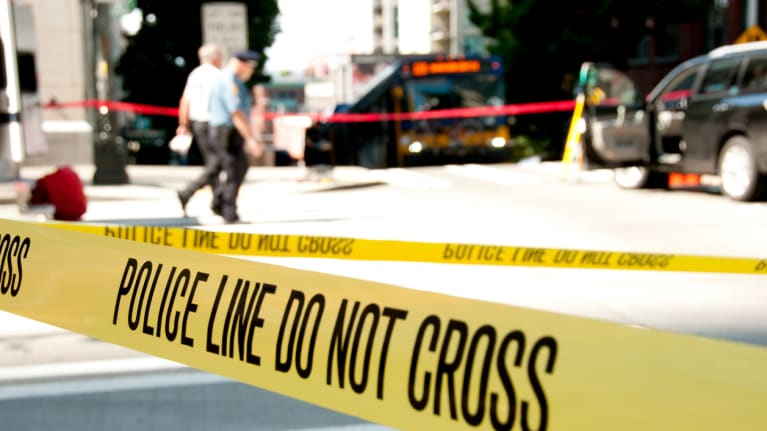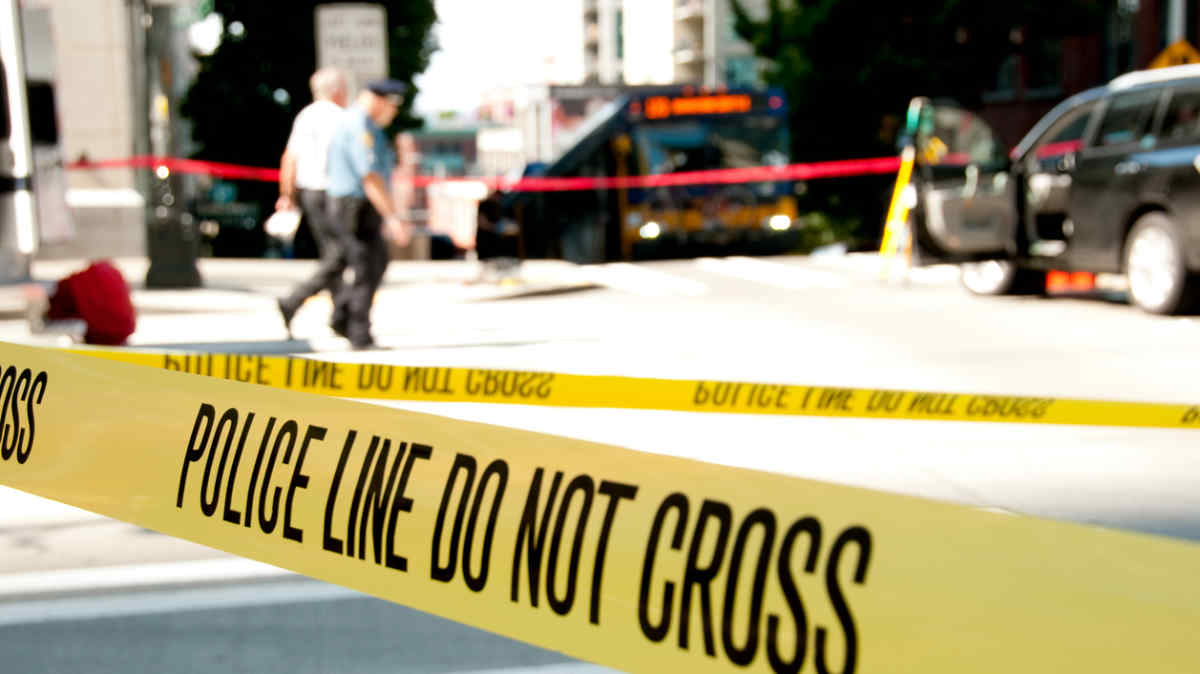

?SHRM has partnered with Security Management Magazine to bring you relevant articles on key workplace topics and strategies.
Organizational stakeholders must invest more time and effort into gaining better insight into the prevention of and survival from active shooter incidents. With a clear understanding of the risks and opportunities involved in an active shooter situation, stakeholders should implement the following strategies to achieve a successful multidimensional response.
Many organizations still don’t have an active shooter response plan in place, and even fewer have trained their employees on what to do. This is a huge mistake.
It’s crucial for organizational stakeholders to commit to active shooter response training so that all employees know what to do in this type of situation. In most cases, employees become more confident and interested in active shooter response training when leaders are supportive of it.
Employees should receive regular training on how to respond to an active shooter situation. The frequency of training will depend on the size and complexity of the organization. Small organizations may only need to train once per year, while large organizations may need to train multiple times per year.
Organizational stakeholders should commit to active shooter response training by providing the necessary resources and support. Training should be conducted by qualified instructors experienced in law enforcement or military operations. Employees should be given the opportunity to ask questions and receive feedback after the training, and they should also be familiar with the layout of their workplace and have a plan of action in case of an emergency.
Employees should be physically and mentally prepared to face an active shooter. They should know how to identify potential threats and what to do if they find themselves in an active shooter situation.
The importance of mental training alongside physical preparation can’t be stressed enough. Natural survival responses are fight, flight and freeze. Approximately 50 percent of those receiving training fully comprehend how to identify a threat and react during an attack, according to research in the report Freeze for action: Neurobiological mechanisms in animal and human freezing. This is one of the reasons victims fail to identify the situation as an emergency and freeze at the hands of the shooter in several active shooter incidents.
While this is a natural reaction to a terrifying and dangerous event, the inability to think or act decisively in such a critical moment can be deadly.
The first step in training your employees to face an active shooter is to understand why they may freeze—most often, it’s because of fear. When faced with a threat, the human brain goes into survival mode. This causes people to focus on the danger and tune out everything else. They become paralyzed by fear and are unable to act.
To overcome this response, employees need to train their brains to focus during a crisis. This can be done by practicing visualization exercises. The key is visualizing how you would respond if you were in an active shooter incident. Placing yourself in the environment through visualization creates familiarity and eliminates the feeling of being caught off guard because you’ve already experienced it. This accelerates the decision-making process and reduces the freeze response.
In these exercises, employees are instructed to picture themselves in a scenario where an active shooter is present. They should be able to visualize themselves confidently taking decisive action, escaping and stopping the threat. With this powerful visualization, your employees can train their brains to respond differently in a real-life situation. When faced with an active shooter, they will be more capable to think straight and come up with an effective solution. Another effective technique to help employees overcome the freeze response involves adding elements of stress during training, such as introducing a timing component. For example, monitor the time required by the staff to evacuate the building during an active assailant drill. Drills should be altered each time by changing the location of attack and available escape routes. This will instill the urgency of the situation in employees’ minds and prepare them to think and act consciously in the face of threats, ensuring their safety instead of freezing.
With that said, organizational stakeholders should openly embrace workplace violence training and invest in improving the employees’ defenses against active shooters.
A little effort will go a long way in boosting employees’ morale and instilling the much-needed confidence and courage to make conscious decisions in the face of an active threat.
Ensure Operational Readiness
Organizational stakeholders must realize their responsibility towards ensuring operational readiness to promote the effectiveness of security measures. This includes installing and maintaining technology and training people to use it well. Security cameras, for example, are a vital piece of security equipment. They can help deter potential shooters from even attempting an attack and can provide critical information to law enforcement if an attack does occur. But if those cameras are not properly maintained, they may not be working and could even fail completely during an attack.
Fences can help keep potential shooters out of the premises while also providing a barrier that can slow down or stop an attacker who does manage to get onto the property. But if a fence is not maintained, it may have gaps or holes that an attacker can exploit. Similarly, radio systems should be tested for transmissibility at multiple locations to identify possible dead spots.
Apart from this, all employees should receive training on the policies governing security locks, cameras and entry card systems. Stakeholders must ensure that all employees know how to use the security equipment during emergencies. They should also know how to protect and maintain it to effectively protect the premises and the people there.
Devise a Multidimensional Plan
In many active shooter incidents, the failure of a one-dimensional approach exposes employees to dangers that could have otherwise been prevented. Often, organizational stakeholders will have to face the consequences of the snowball effect of these failures. Failure to maintain security equipment leads to unrestricted access by assailants or intruders. Poor environmental design reduces the likelihood of observing an active shooter before an attack, and inadequate training leads to employee confusion during an attack, resulting in increased casualties.
A multidimensional strategy should include:
- Designing a facility that is difficult for an active shooter to access. This means having security measures in place, such as locked doors, security cameras and alarm systems.
- Having a clear and concise plan for evacuating the building in the event of an active shooter. Employees should be familiar with the evacuation routes and where to go if they need shelter.
- Having good lighting both inside and outside the building. This not only makes it more difficult for an intruder to go unnoticed, but also makes it easier for people inside the building to see what is going on around them.
- Having wide hallways and doorways. This makes it easier for people to evacuate the building and reach a safe spot.
- Having visible security measures, such as security officers, who can serve as a deterrent—reminding potential shooters that they are being watched and will be held accountable for their actions.
There are a variety of pitfalls in developing an active assailant action plan. There have been instances where security guards fail to identify or report suspicious individuals, enabling active shooters to carry out their objectives. In addition to this, staff members that lack awareness of organizational safety policies may unknowingly violate rules. They often leave doors unlocked, allowing undetected access to intruders. Just as good environmental design can deter an assailant, bad environmental design (overgrown foliage, unlit doorways) can offer a malicious actor places to hide, ambush people or enter a facility unseen. Furthermore, if camera systems are inoperable or time-delayed, the intruder can advance his or her mission and attack.
This is why redundant measures are so critical for a successful security plan—they safeguard against a bypassed system, preventing an active shooter from entering the building and causing harm.
The multidimensional approach to active shooter response interweaves physical and mental training of the employees, installation of physical security measures and integrating of environmental design elements that discourage deviant behavior. This strategy lends the redundancy needed to strengthen the security structure of an organization.
Thankfully, there are multiple resources available to assist stakeholders with creating a multidimensional approach. These include online resources, well-trained and qualified security professionals and local law enforcement agencies. Two online resources are the FBI’s Active Shooter Resources webpage and the U.S. Department of Homeland Security’s Active Shooter: How to Respond booklet. Quality security professionals should have at a minimum military or law enforcement experience, and crime prevention through environmental design (CPTED) certification. Additional security certifications are also desirable.
While the individual strategies against security threats used by physical and cybersecurity professionals are relevant and effective, combining these techniques into a single security management program is the best way to maximize protection against active shooters.
Gene Petrino is cofounder of Survival Response LLC. He is a decorated law enforcement officer, former SWAT commander and educator. For nearly 30 years, he has gained in-depth expertise in tactical command, security threat analysis and active shooter instruction.
This article is adapted from Security Management Magazine with permission from ASIS © 2022. All rights reserved.

